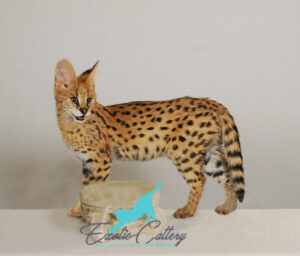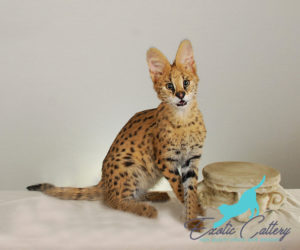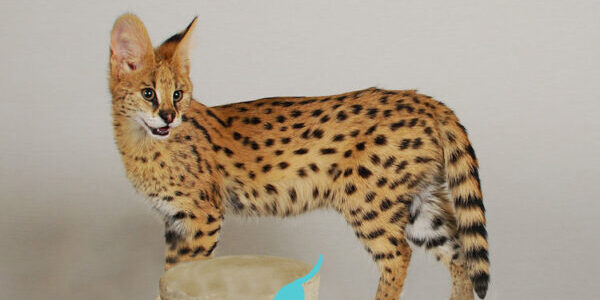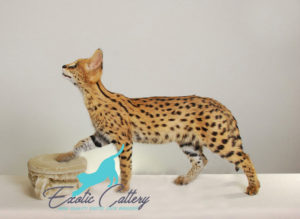Serval Cat Size: Measuring Africa’s Spotted Giants
Have you ever wondered how big a serval cat is? Let’s dive into the world of these African wild cats and uncover the facts about their size. Serval cats are medium-sized cats native to the grasslands of Africa. They’re known for their distinctive spots and long legs, making them stand out from other wild felines. They are a member of the Leptailurus serval species, which is listed as Least Concern by the International Union for Conservation of Nature (IUCN).
What are Serval Cats?
Serval cats (Leptailurus serval) are fascinating creatures that roam the Savannah grasslands of Africa. These spotted felines are a sight to behold, with their unique appearance and impressive hunting skills.
If you’re considering a savannah cat as a pet, it’s crucial to understand that they’re descended from servals. Knowing about serval size can give you insights into what to expect from a savannah.
Serval Cat Size: How Big Are They?
So, how big do serval cats get? Let’s break it down:
- Height: 21-26 inches at the shoulder
- Length: 23-36 inches (body) + 9-16 inches (tail)
- Serval cat weight: 20-40 pounds.

serval cat size
Compared to your average house cat, servals are giants. They’re about twice the size of a domestic cat, with much longer legs.
| Feature | Serval Cat | Domestic Cat |
|---|---|---|
| Height | 21-24 inches | 9-10 inches |
| Weight | 20-40 pounds | 8-10 pounds |
| Leg Length | Very long | Short to medium |
This size difference is why many people are fascinated by owning a savannah cat, which inherits some of the serval’s impressive stature.
Physical Characteristics of Serval Cats
Servals aren’t just big – they’re built differently from other cats.
- Spots: Their coat patterns resemble those of cheetahs or leopards.
- Legs: Longest legs relative to the body size of any cat.
- Ears: Large and rounded, perfect for hunting in tall grass.
- Coat: Short and coarse, usually golden-yellow with black spots.
These features make servals excellent hunters in their natural habitat. Their long legs and large ears are especially useful for detecting and catching prey in the tall grasses of the savannah.
Serval Cat Habitat and Distribution
Where can you find these spotted giants in the wild? Servals are native to Africa, with a range extending from the Sahara to South Africa.
- Savannah grasslands
- Wetlands
- Bamboo thickets
- Areas with tall grass and access to water
You won’t find wild servals roaming the streets of New York or London. They’re purely African cats, adapted to specific ecosystems on that continent.
Serval Cat Habitat and Distribution
| Habitat | Location |
|---|---|
| Savannah | South Africa, Kenya, Tanzania |
| Grassland | South Africa, Kenya, Tanzania |
| Woodland | South Africa, Kenya, Tanzania |
Serval Cat Diet and Hunting Behavior
What do these medium-sized cats eat? Servals are carnivorous mammals with a diet that includes:
- Rodents
- Birds
- Frogs
- Insects
- Small antelopes (occasionally)
Their hunting technique is fascinating. Serval uses their long legs to leap high in the air, coming down on their prey with precision. This method is particularly effective for catching birds.
The size and build of servals make them incredibly efficient hunters. Their large ears can detect the slightest movement in the grass, while their long legs allow them to pounce with incredible force.

If you’re interested in savannah cat behavior, you’ll see some of these hunting instincts in action, even in a domestic setting.
Serval Cat Diet and Hunting Behavior
| Prey | Frequency |
|---|---|
| Rodents | High |
| Birds | Medium |
| Reptiles | Low |
| Insects | Low |
Serval Cats in Captivity
Thinking about a serval cat for sale? Hold up. These aren’t your average house cats. Serval need space. Lots of it. Their size and wild instincts make them challenging pets.
Some folks opt for savannah cats instead. They’re a mix of servals and domestic cats. Still, even F1 savannahs can be a handful.
Here’s the deal with keeping servals:
- They need a large, secure outdoor enclosure
- Their diet is expensive and specific
- They’re not cuddly lap cats
- Legal issues in many areas
Before you start googling “buy serval cat“, think hard. They’re wild animals, not pets.
Conservation Status and Threats
Servals aren’t on the brink, but they’re not thriving either. The IUCN (International Union for Conservation of Nature) lists them as “Least Concern”, but that doesn’t mean they’re safe.
Threats to servals include:
- Habitat loss
- Hunting for their pelts
- Car accidents in developed areas
The Wildlife Conservation Society works to protect servals and other wild cats. Their efforts focus on preserving habitats and reducing human-wildlife conflicts.
Serval Cats vs. Savannah Cats: Size Differences
Let’s break down the serval cat size difference between servals and their domesticated cousins, savannah cats:
| Feature | Serval | F1 Savannah | F5 Savannah |
|---|---|---|---|
| Height | 21-24 inches | 16-18 inches | 10-13 inches |
| Weight | 20-40 lbs | 15-25 lbs | 10-15 lbs |
| Wildness | 100% wild | 50% wild | 3% wild |
As you can see, even F1 savannah cats are smaller than pure servals. By the time you get to F5 savannahs, they’re much closer in size to regular house cats.
The Big Picture on Serval Size
Servals are impressive cats. Their size and build make them perfect for their African habitat.
But here’s the thing – their size also makes them challenging pets. If you’re fascinated by servals, consider supporting conservation efforts instead of trying to own one.
Want a taste of serval without the risks? Look into Savannah cats. They’re not servals, but they carry some of that wild beauty in a more manageable package.
Remember, when it comes to exotic pets, bigger isn’t always better. Sometimes, it’s just bigger trouble.
Physical Characteristics of Serval Cats
Serval cats have a distinctive appearance, with a tawny or golden coat and black spots on their fur. They have long legs and large ears, which help them to detect prey and navigate their surroundings.
Coat Patterns and Colors
Serval cats have a variety of coat patterns and colors, including solid, spotted, and marbled. Their coat is thick and soft, with a distinctive texture that helps to keep them warm in cold temperatures.
Serval Cat Habitat and Distribution
Serval cats are found in a variety of habitats, including savannahs, grasslands, and woodlands. They are adaptable animals and can thrive in a range of environments, from hot and dry to cool and humid.
Preferred Ecosystems
Serval cats prefer areas with open spaces and low vegetation, which allow them to hunt and move easily. They are also found in areas with access to water, such as rivers and lakes.
Serval Cat Diet and Hunting Behavior
Serval cats are carnivorous mammals, which means they primarily feed on meat. They are skilled hunters and feed on a variety of prey, including small mammals, birds, and reptiles.
Prey Preferences
Serval cats have a varied diet and will eat a range of prey, including rodents, birds, and reptiles. They are also known to eat insects and small mammals.
Hunting Techniques
Serval cats are skilled hunters and use a variety of techniques to catch their prey. They are ambush predators, which means they use stealth and surprise to catch their prey off guard.
Hunting Techniques Related to Their Size
Serval cats are medium-sized cats, which means they are well-suited to hunting small to medium-sized prey. They use their speed, agility, and powerful legs to catch their prey, and are often successful in their hunting endeavors.
Serval Cat Size Comparison
| Species | Weight (lbs) | Length (in) |
|---|---|---|
| Serval Cat | 9-20 | 20-30 |
| Domestic Cat | 8-15 | 15-20 |
| Lion | 260-550 | 50-60 |
| Leopard | 70-150 | 30-40 |
FAQs About Serval Cat Size
Are servals bigger than bobcats?
Generally, yes. Servals are taller and longer, but bobcats can be heavier.
Can I keep a serval as a pet?
It’s legal in some places, but not recommended. They’re wild animals with complex needs.
How much does it cost to buy a serval?
Serval cat prices can range from $5000 to $20000. But remember, the initial cost is just the beginning.
Are Savannah cats as big as servals?
No, even F1 savannah cats are smaller than pure servals.
How big are Serval cats?
Serval cats are medium-sized cats, with a typical weight range of 9-20 pounds (4-9 kg) and a length of 20-30 inches (50-75 cm).
What do serval cats eat?
Serval cats are carnivorous mammals and feed on a variety of prey, including small mammals, birds, and reptiles.
Where are Serval cats found?
Serval cats are found in the savannahs and grasslands of sub-Saharan Africa, including countries such as South Africa, Kenya, and Tanzania.
How do Serval cats hunt?
Serval cats are skilled hunters and use a variety of techniques, including ambush, speed, agility, and powerful legs, to catch their prey.








